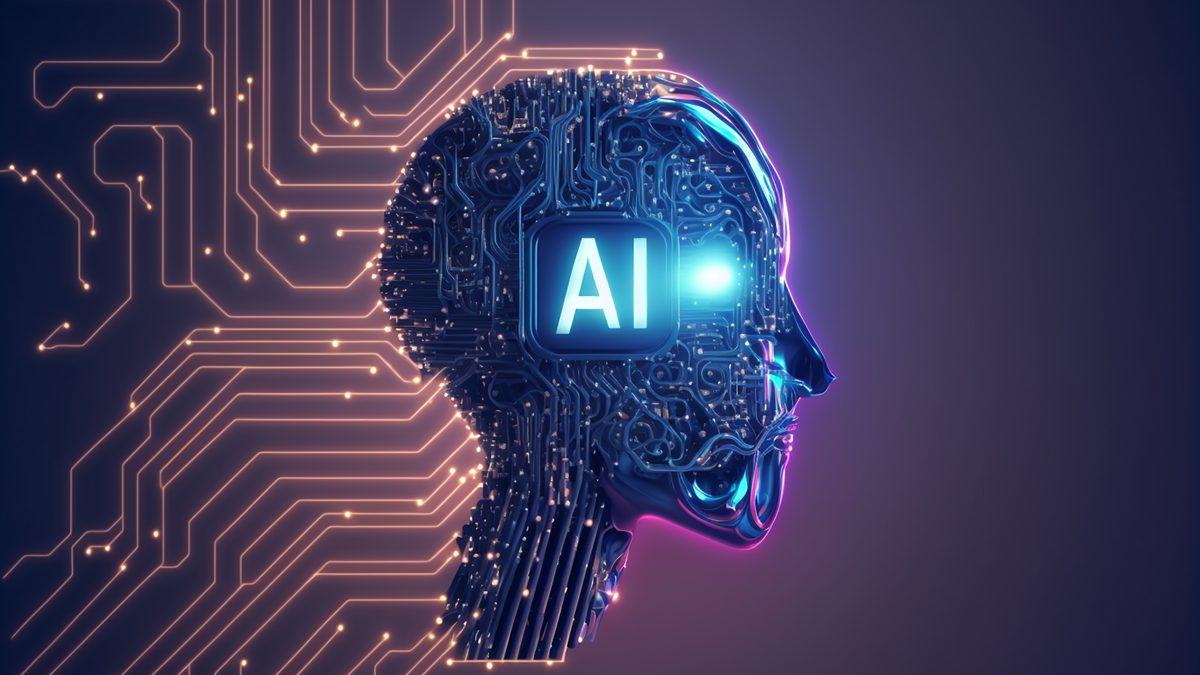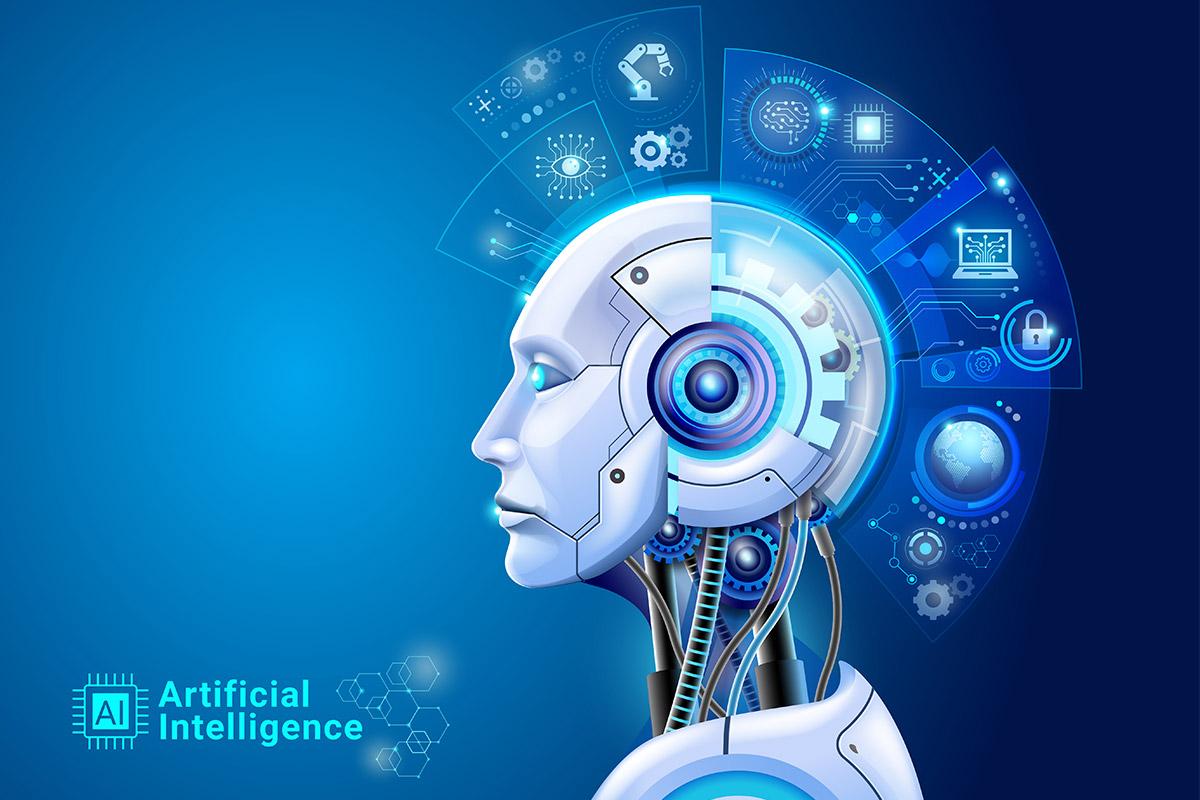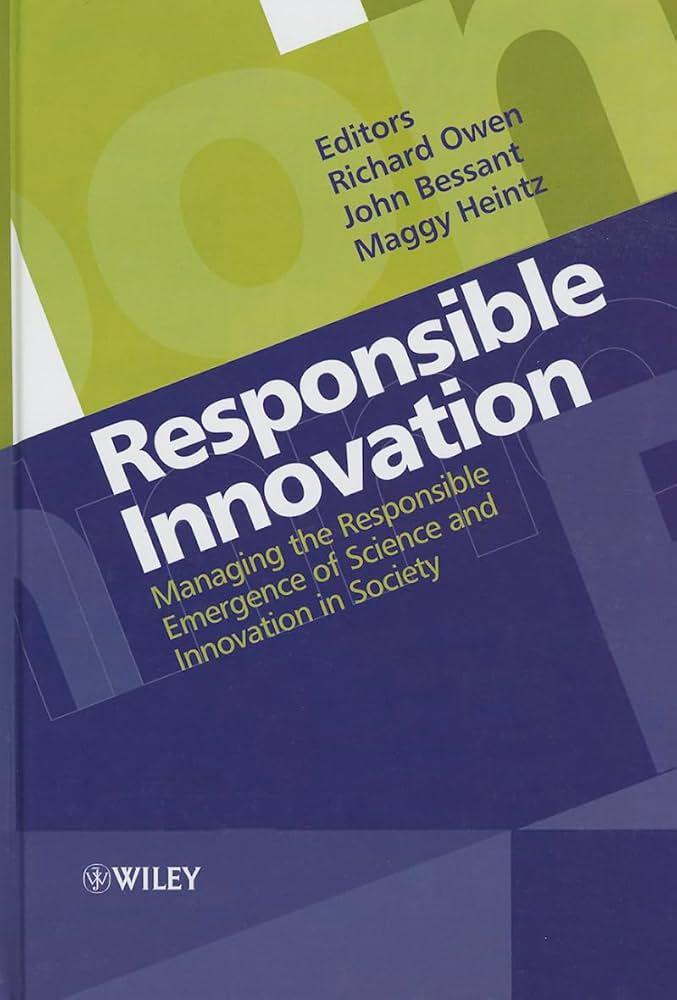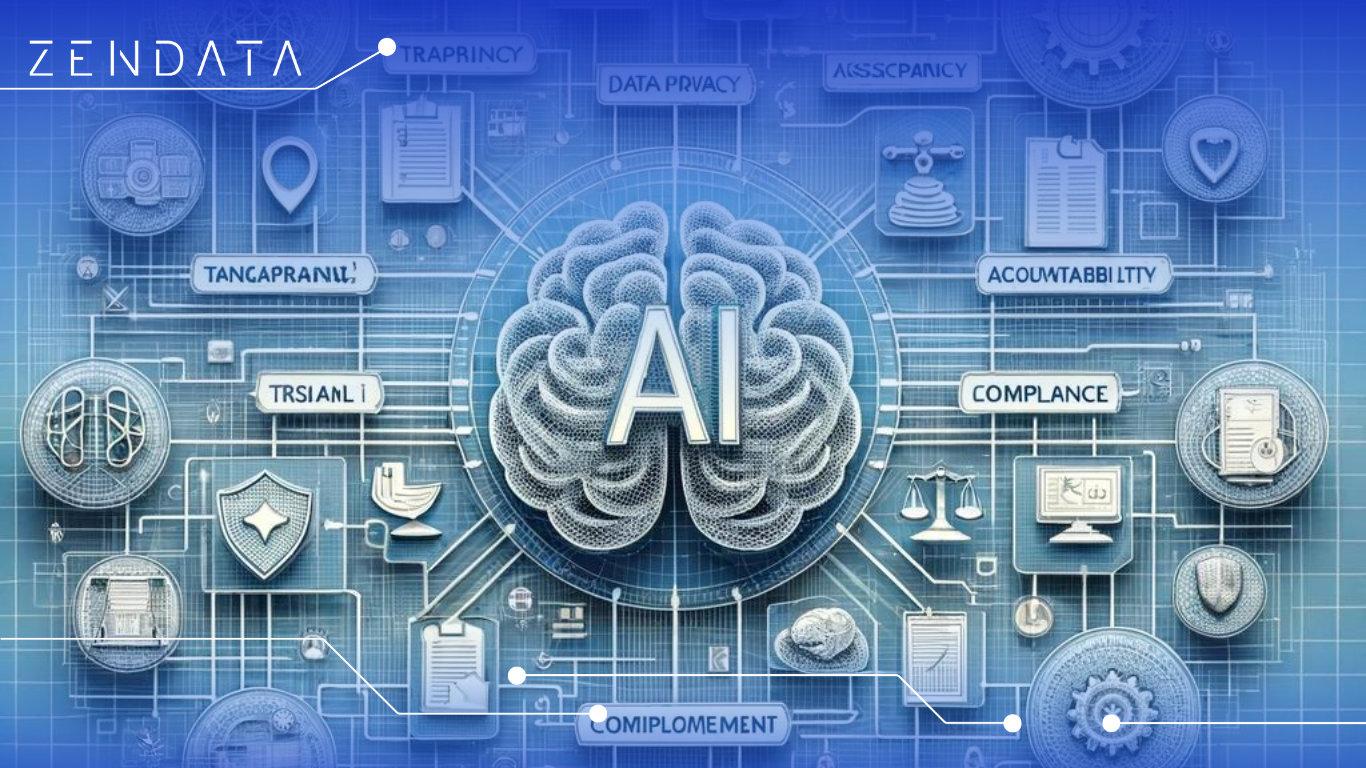In a world increasingly shaped by the rapid advancements of technology, few voices resonate as powerfully as that of Cate Blanchett. Renowned not just for her extraordinary talent on screen, but also for her unwavering commitment to pressing global issues, the acclaimed actress has recently turned her gaze towards the rising tide of artificial intelligence. With a compelling blend of caution and insight, Blanchett warns that the unchecked evolution of AI poses profound risks not only to individual creativity but to the very fabric of society itself. As we stand at the precipice of an AI-driven future, her reflections serve as a stark reminder of the dual-edged nature of innovation—a call to action to consider the implications of our own creations before they spiral beyond our control. This article delves into Blanchett’s perspective, exploring the potential destructiveness of AI and the urgent need for a thoughtful dialogue around its development.
Table of Contents
- The Dual-Edged Sword of Artificial Intelligence
- Understanding the Ethical Implications of AI Development
- Fostering Responsible Innovation in Technology
- Advocating for Global Collaboration on AI Governance
- Q&A
- In Conclusion

The Dual-Edged Sword of Artificial Intelligence
Artificial Intelligence, with its unparalleled potential and rapid advancements, has emerged as a transformative force across various sectors. Yet, as Cate Blanchett poignantly cautions, its capabilities come with an inherent duality that can lead to incredible destruction if left unchecked. Many experts argue that the unregulated use of AI could lead to significant ethical dilemmas and societal disruption. Key concerns include:
- Job Displacement: Automation threatens traditional job markets.
- Bias and Inequality: Algorithms can perpetuate existing societal biases.
- Privacy Erosion: Surveillance capabilities raise significant privacy issues.
- Misinformation Spread: Deepfakes and fake news can sow discord.
In contrast to its potential dangers, AI offers remarkable benefits when employed responsibly. The technology has the capacity to revolutionize healthcare, optimize transportation, and enhance education. To illustrate the balance between its benefits and hazards, consider the following table outlining the pros and cons of artificial intelligence:
| Pros | Cons |
|---|---|
| Increased Efficiency | Job Losses |
| Enhanced Research Capabilities | Data Privacy Concerns |
| 24/7 Availability | Dependence on Technology |
| Personalization of Services | Ethical Dilemmas |
Ultimately, the balance of power that AI presents requires a thoughtful approach, grounded in ethical considerations and a commitment to ensuring that its development serves humanity rather than undermining it. Blanchett’s call to vigilance reminds us that technology must be wielded with care, acknowledging both its potential for innovation and its capacity for destruction.

Understanding the Ethical Implications of AI Development
Delving into the realm of artificial intelligence presents a myriad of ethical quandaries that necessitate our attention. Notably, the potential for misuse of AI technologies raises critical concerns. As Cate Blanchett cautions, the destructive capabilities of AI, if left unchecked, could lead to scenarios we have only pondered in dystopian fiction. The autonomy of these systems poses risks not only to individual privacy but also to societal norms. Stakeholders in AI development must be vigilant in addressing issues such as:
- Bias in algorithms: How can we ensure fairness in AI decisions?
- Responsibility and accountability: Who is liable when AI systems cause harm?
- Transparency: Is the decision-making process easily understood?
- Impact on employment: How will automation change the job landscape?
The integrity of AI systems must be a collective priority for developers, policymakers, and users alike. Escalating incidents of AI-enabled misinformation and surveillance highlight the urgency to cultivate ethical guidelines for development and deployment. A thoughtful approach can guide us towards responsible AI integration, fostering a future that upholds human values. Here’s a snapshot of some possible ethical frameworks:
| Framework | Description | Example |
|---|---|---|
| Utilitarianism | Focus on the greatest good for the greatest number | Assessing AI’s societal impact |
| Deontology | Emphasizes moral duty and rules | Adhering to privacy laws |
| Virtue Ethics | Cultivating moral character in developers | Promoting empathy in AI design |

Fostering Responsible Innovation in Technology
As the dialogue around artificial intelligence intensifies, industry leaders like Cate Blanchett emphasize the urgent need for safeguarding humanity against potential risks. This spotlight on responsible innovation brings forth the reality that while technology offers incredible advancements, it also poses ethical dilemmas that cannot be ignored. It is crucial to cultivate a mindset where we not only harness the benefits of AI but also understand and mitigate its destructive capabilities through proactive measures. The focus must shift towards creating frameworks that advocate for transparency, accountability, and ethical considerations in AI development.
Organizations must prioritize fostering a culture of responsibility among tech developers. Key strategies include:
- Inclusive Design: Ensuring diverse perspectives in AI development to reduce bias.
- Regulatory Compliance: Adhering to emerging laws that govern AI technologies.
- Continuous Education: Providing ongoing training to tech professionals about ethical implications.
- Impact Assessments: Regularly evaluating AI systems for potential societal effects before deployment.
| Strategy | Description |
|---|---|
| Inclusive Design | Diverse development teams help mitigate AI biases. |
| Regulatory Compliance | Abiding by ethical standards and legal frameworks. |
| Continuous Education | Empowering developers through ethical training. |
| Impact Assessments | Guidelines to assess potential societal impacts of AI. |

Advocating for Global Collaboration on AI Governance
The call for a unified approach to artificial intelligence governance has never been more urgent. As influential voices like Cate Blanchett highlight the potential destructiveness of AI, it is imperative to recognize that no single nation has the capability to manage this complex technology in isolation. Global collaboration can lead to the establishment of shared ethical standards and regulatory frameworks that prioritize safety, accountability, and transparency. This approach promotes a holistic understanding of AI’s impact across different cultures and economies, ultimately fostering innovation that benefits humanity as a whole.
Several key factors underscore the necessity of global synergy in AI governance:
- Cross-Border Challenges: AI technologies do not adhere to national boundaries, making international cooperation essential for comprehensive risk assessment.
- Diverse Perspectives: Engaging a range of stakeholders—including governments, industry leaders, and civil society—ensures that governance frameworks reflect a multitude of values and experiences.
- Pooling Resources: Collaborative research and development initiatives can leverage the strengths of different regions, accelerating progress while sharing the burden of oversight.
| Benefits of Global Collaboration | Potential Risks |
|---|---|
| Enhanced Security Measures | Misalignment in Regulatory Standards |
| Increasing Innovation | Geopolitical Tensions |
| Inclusive Decision-Making | Inadequate Representation |
Q&A
Q&A: Cate Blanchett Warns AI is Incredibly Destructive
In a recent discussion, Academy Award-winning actress Cate Blanchett shared her thoughts on the rapid advances in artificial intelligence (AI) and its potential consequences. Here’s a breakdown of the key points from her warning.
Q: Why did Cate Blanchett choose to speak out about AI now?
A: Blanchett’s concerns stem from the accelerating pace of AI development and its pervasive influence across various industries. She believes that the combination of creativity, ethics, and technology is reaching a critical juncture that necessitates urgent dialogue.
Q: What specific aspects of AI does she find most concerning?
A: Blanchett has highlighted the potential for AI to disrupt employment, compromise privacy, and perpetuate biases present in data sets. She emphasizes that AI’s growing authority poses existential questions about human creativity and moral responsibility.
Q: Can you elaborate on her views regarding creativity and AI?
A: Blanchett argues that while AI can mimic artistic styles and generate content, it lacks the emotional depth and innate creativity that human artists bring to their work. She warns that relying too heavily on AI could dilute the authenticity of art and stifle genuine human expression.
Q: Did Blanchett suggest any solutions or pathways forward?
A: Yes, she advocates for a collaborative approach between technologists, artists, and ethicists. Blanchett calls for creating frameworks that ensure AI is developed responsibly, emphasizing the importance of incorporating ethical guidelines and human oversight into AI technologies.
Q: How does she envision the future relationship between humanity and AI?
A: Blanchett envisions a future where AI is used as a tool that complements human creativity rather than replaces it. She champions the idea that humans should retain agency in the face of advancing technology, reminding us that our values and ethical considerations should guide the development of AI.
Q: What was the response to her warning from the public and experts?
A: The reception has been mixed, with many applauding her for bringing attention to a pressing issue while others argue that a balanced view of AI’s benefits and risks is essential. Experts in AI ethics also echo her concerns, urging proactive discussions around governance and regulation.
Q: What can individuals do to become more informed about AI and its implications?
A: Blanchett encourages individuals to engage in conversations about AI, educate themselves on its developments, and participate in community discussions about ethics in technology. Staying informed and advocating for responsible AI usage are crucial steps toward a balanced future.
Cate Blanchett’s warning about the potential destructiveness of AI serves as a thought-provoking reminder of the delicate relationship between technology and humanity. As we navigate this uncharted territory, her advocacy for responsible and ethical AI development remains critical.
In Conclusion
As we close the curtain on this exploration of Cate Blanchett’s stark warning about the potential perils of artificial intelligence, it becomes clear that her insights resonate far beyond the realm of celebrity discourse. In a world where technology accelerates at breakneck speed, acknowledging the dual-edged nature of AI invites a necessary dialogue about our collective responsibility. Blanchett’s message serves as both cautionary tale and rallying cry, urging us to remain vigilant stewards of innovation, mindful of the consequences that unchecked advancements may bring. As the conversation around AI continues to evolve, let us take her words to heart, striving to ensure that our technological pursuits enrich rather than endanger the tapestry of human life. The future lies in our hands—may we tread thoughtfully as we navigate this brave new frontier.

AI Sketch GeneratorAi Drawing Generator Free Online Revolutionizing Drawing Generation with AI
Capybara Go is a charming text-based roguelike RPG where you control a capybara on whimsical journeys, encountering random events and exciting challenges.
ivermectin 6 mg without a doctor prescription – ivermectin 6 mg oral how to get tegretol without a prescription
cheap accutane 40mg – isotretinoin 10mg over the counter order linezolid pill
order amoxil generic – generic diovan combivent sale
zithromax 250mg brand – zithromax pill bystolic 20mg for sale
order omnacortil 10mg – order azithromycin 500mg online cheap buy cheap generic progesterone
buy gabapentin 100mg pill – buy neurontin 800mg pill buy itraconazole 100 mg for sale
lasix 100mg tablet – brand piracetam 800mg betnovate without prescription
order monodox pill – glucotrol 5mg brand order glipizide 5mg for sale
augmentin 375mg pills – purchase cymbalta for sale buy duloxetine sale
order amoxiclav – brand clavulanate buy cymbalta 40mg pill
semaglutide 14 mg price – levitra 20mg over the counter generic cyproheptadine 4mg
tizanidine 2mg pills – plaquenil pill hydrochlorothiazide 25mg usa
generic cialis – buy cialis 5mg pill sildenafil 100mg canada
viagra on line – tadalafil 5mg oral brand tadalafil 40mg
brand cenforce – aralen 250mg cost buy glycomet pills
atorvastatin 10mg cost – amlodipine 5mg over the counter zestril over the counter
prilosec generic – buy generic metoprolol online atenolol 50mg brand
cost medrol – medrol 16 mg without prescription aristocort 10mg sale
buy desloratadine no prescription – order claritin pill priligy 60mg ca
cytotec cheap – diltiazem 180mg us order diltiazem 180mg generic
buy acyclovir 800mg generic – order zovirax pill buy cheap crestor
how to buy domperidone – motilium 10mg over the counter buy flexeril paypal
domperidone 10mg pill – cost domperidone order flexeril 15mg generic
buy generic propranolol online – methotrexate pills order methotrexate 5mg
medex tablet – order warfarin 5mg for sale buy losartan cheap
buy generic levofloxacin over the counter – levaquin usa order zantac sale
generic esomeprazole 40mg – buy esomeprazole 40mg sale imitrex order online
buy mobic cheap – buy mobic 7.5mg pills order generic tamsulosin
A Mediterranean-style diet supports vascular health and complements ivecop 12 tablet uses. Pay securely, with complete anonymity.
They redefined intimacy together, with tenderness and guidance from kamagra super online. Feel secure knowing your care moves with trusted postal hands.
order zofran 4mg without prescription – buy generic simvastatin zocor 10mg cost
I genuinely liked the approach this was written.
valacyclovir over the counter – valtrex usa buy fluconazole 200mg online
For those hesitant to act, patient education often reveals the safety of buy viagra. When you choose to fight back, you choose to live fully.
buy provigil 100mg online order provigil 100mg online cheap buy generic provigil 100mg order provigil 200mg sale order modafinil 100mg generic generic provigil 100mg modafinil 200mg cheap
Emotional withdrawal due to ED may reverse once confidence returns through viagra coupons. Lasting healing happens not in one moment, but across every brave step you choose to take.
Thanks towards putting this up. It’s evidently done.
More posts like this would create the online time more useful.
azithromycin cost – buy sumycin 500mg without prescription flagyl 200mg for sale
brand rybelsus – semaglutide without prescription periactin 4mg for sale
Vidalista black cialis 80 mg: Vidalista professional 20 mg – Vidalista 40 side effects
buy domperidone pills – order domperidone without prescription flexeril over the counter
buy inderal 10mg generic – buy inderal 10mg without prescription oral methotrexate 5mg
amoxicillin usa – buy valsartan sale combivent 100mcg price
ivermerc 12: iverford – vermact 12 use
purchase zithromax without prescription – buy generic azithromycin over the counter nebivolol oral
augmentin order – atbioinfo ampicillin for sale
buy esomeprazole medication – https://anexamate.com/ order esomeprazole generic
purchase medex online – https://coumamide.com/ how to buy cozaar
mobic 15mg drug – relieve pain mobic 15mg without prescription
canadian Levitra: vardenafilotc.com – what is vardenafil
deltasone 20mg without prescription – https://apreplson.com/ order prednisone 40mg for sale
where can i buy ed pills – top ed drugs buy ed pills cheap
buy amoxicillin – https://combamoxi.com/ buy amoxicillin generic
diflucan 200mg cheap – buy diflucan 200mg pills fluconazole sale
buy cenforce 100mg pill – buy generic cenforce for sale cenforce 50mg brand
cipro: interreg-euro-med.eu/forums/users/cifran/ – ciprofloxacin eye drops
buy cialis toronto – fast ciltad cialis insurance coverage blue cross
cialis online pharmacy australia – click when to take cialis for best results
oral ranitidine 300mg – https://aranitidine.com/# purchase ranitidine without prescription
buy viagra houston – https://strongvpls.com/ cheap legal viagra
This website really has all of the information and facts I needed there this thesis and didn’t positive who to ask. que es clomid
This website positively has all of the information and facts I needed to this case and didn’t identify who to ask. prednisone dosage for asthma
This is the type of advise I recoup helpful. purchase albuterol online cheap
Facts blog you possess here.. It’s hard to assign strong quality script like yours these days. I justifiably appreciate individuals like you! Go through guardianship!! https://prohnrg.com/product/rosuvastatin-for-sale/
The thoroughness in this draft is noteworthy. aranitidine
avanafil local name in bangladesh: avanafil (stendra) para que sirve – extra super avana
Ventolin liquid: albuterol nebulizer solution – Ventolin inhaler manufacturer
Good blog you be undergoing here.. It’s hard to on elevated worth belles-lettres like yours these days. I justifiably recognize individuals like you! Withstand care!!
https://doxycyclinege.com/pro/spironolactone/
More peace pieces like this would create the web better. http://ledyardmachine.com/forum/User-Toynck
https://h30434.www3.hp.com/t5/user/viewprofilepage/user-id/7504408 revatio vs viagra
forxiga 10 mg brand – click generic forxiga 10mg
xenical online – https://asacostat.com/# generic xenical 120mg
hims Sildenafil Revw https://experienceleaguecommunities.adobe.com/t5/user/viewprofilepage/user-id/17882947
The thoroughness in this section is noteworthy. https://myvisualdatabase.com/forum/profile.php?id=118727
https://cathopic.com/@cialissuperactive Tadaga Super Active
https://poxet.beauty/#
air pro air https://community.jamf.com/t5/user/viewprofilepage/user-id/152430
stromectol walgreens https://ridesmartflorida.com/scavista-12/
You can conserve yourself and your dearest by way of being cautious when buying pharmaceutical online. Some druggist’s websites control legally and sell convenience, reclusion, bring in savings and safeguards as a replacement for purchasing medicines. buy in TerbinaPharmacy https://terbinafines.com/product/nizoral.html nizoral
I couldn’t turn down commenting. Well written! TerbinaPharmacy
Facts blog you have here.. It’s obdurate to assign strong status belles-lettres like yours these days. I really recognize individuals like you! Take care!!
https://ummalife.com/post/520413 vermact 12 10 tablet
cialis 10 mgs work https://cialismalew.com/#
https://t.me/s/ef_beef
https://t.me/s/site_official_1win/740
https://t.me/s/Top_BestCasino/173
https://t.me/s/officials_pokerdom/3636
https://t.me/officials_pokerdom/3202
https://t.me/s/officials_pokerdom/4094
https://t.me/s/officials_pokerdom/3307
https://t.me/s/officials_pokerdom/3495
https://t.me/s/flagman_official_registration
https://t.me/s/IZZI_officials
https://t.me/s/iGaming_live/4868
https://t.me/s/RejtingTopKazino
https://t.me/iGaming_live/4869
https://t.me/s/Beefcasino_officials
https://t.me/s/beefcasino_officials
https://t.me/dragon_money_mani/13
https://t.me/s/dragon_money_mani/27
https://t.me/s/dragon_money_mani/22
https://t.me/s/official_pokerdom_pokerdom
https://t.me/s/iGaming_live/4875